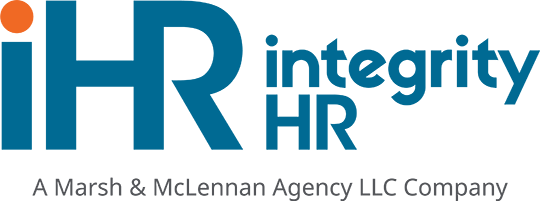Moving away from a PEO: Annual Audit Checklist
If you are already in a PEO then you are your lone advocate. An annual audit is a good practice for any human resources team using a PEO is to make sure you are getting some of the value they promised. Here are some areas that need to be addressed in your PEO audit:
Ask the Right HR Services Questions
Many PEOs offer human resources services. Often these services are active at the onset of the contract, but in some cases, the employer will need to seek out resources, which may not be dedicated or knowledgeable about your business. Be sure to review your contract to determine what HR services are covered by your agreement.
- Are they assisting with: Recruiting? Onboarding? Employee relations resolutions?
- What about managing the employee lifecycle? Helping with setting compensation?
- Do they provide training and education?
- Are they helping with advisory services on terminations and workers compensation?
Additionally, human resources should be a partner with every business leader in an organization. As a matter of consideration, human resources should help the employer carefully evaluate every one of the following areas.
Confirm the PEO Completed Payroll Taxes Accurately
If payroll taxes are filed under the PEOs tax ID (as they should be) then you should make sure each quarterly tax filing was completed and the taxes deposited with the State and IRS. If they have not or were incorrect or late you may be liable for fines, interest, and/or penalties. Here are some general items to double-check:
- If they are capping FUTA, SUTA, and OASDI then check to be sure the caps were properly applied.
- Make sure W2s were provided and were on time.
- Review that the PEO is current on all taxes and deposits.
- Inquire how they are holding deposits and whether you were credited for employee taxes withheld from the employees.
Identify Workers’ Compensation Responsibility
If you are not aware of how workers’ compensation is funded or who holds the contract then you need to find out. Here’s how to do that:
- Get a copy of the policy.
- Make certain that your place of work is covered and that the classifications are correct.
- Make sure the premiums are paid and the policy is current.
- Check for claims filed by your employees or pending hearings.
- Confirm if a portion of the premium is self-insured and if so, how much, and how much are you at risk for (how is it determined).
- Find out if there have been premium adjustments, refunds, dividends, or pending increases or retroactive adjustments.
Look for Any Payroll Processing Mistakes
Make certain that employees have been compensated as agreed upon. These are areas where mistakes commonly happen:
- Be sure overtime has been properly managed and applied.
- Make sure proper deductions have been applied for each employee and that you have been given credit for any employee deduction/contribution for benefits.
- If you are being charged in full for employee benefits and your employees contribute to the plans then be sure you are not also being charged in full for payroll – you should be getting a credit.
Compare the PEO’s Employee Handbook/Manual with Your Own
If you haven’t already, obtain a copy of the PEOs employee handbook, and make sure it is applicable to your state and consistent with your own. If not, be sure to identify the areas of difference. Also, check the leave and return-to-work provisions. This could become critical if you decide to move away from a peo.
Review Employee Benefits and COBRA offered by the PEO to Your Employees
The PEO should provide you with a copy of all the employee benefits offered to your employees. Be sure to familiarize yourself with their eligibility rules for employees and dependents, including:
- Waiting periods
- Effective dates
- Attained age limits/restrictions
- Participation requirements
- Contribution
Make sure these policies are compliant with your state and that networks are adequate. Also, check other policy factors such as leave restrictions, rehire provisions, deductible/copay carry-over credits, etc. Make sure that departments, classifications, and any eligibility class differentials are consistent with your policies.
If the PEO requires you to monitor eligibility and enrollment, check with your legal counsel as to how that might affect the PEO’s responsibility and your liability.
Once a year, consider bidding out the benefits just to be sure the PEO is maintaining their commitment to save you money on benefits. Make sure they are not accomplishing savings with cost-shifting to employees (with deductibles, copays, contributions levels, maximum benefit allowances, etc).
Here are other nuts and bolts to review when comes to the PEO’s benefits and COBRA offerings:
- Make certain the PEO is properly managing COBRA and associated notices.
- Ask for a copy of the PEO’s COBRA policy and administration rules.
- If the PEO is requiring you to report qualifying events you might check with an HR expert to see if this alters the PEOs responsibility and your liability.
- Have the PEO confirm to you if any or part of the benefits they offer are self-insured.
- If self-insured, you will want to review a copy of the TPA and stop-loss agreements.
- Be sure you know how your liability in the self-insured pool is determined and how your risk is calculated.
- Have the PEO confirm TPA and claim payments to you – especially that they are current. There is usually a two to three month lag in claims payment.
Familiarize Yourself with the PEO’s 401(k)
Your employees (and you) will be contributing to the PEO’s pension plan/401(k).
You may still be held partially liable so be sure to familiarize yourself with the PEO’s 401(k), including:
- Policies
- Practices
- Advisors
- Investment funds
- Customer service
- Ratings
- Transferability in the event of your termination
Understand the PEO’s Leave of Absence or Disability Policies and How Your Business is Impacted
Be sure to carefully check the PEO’s policy regarding “leave.” You need to know what their policies are toward vacation, sick leave, disability, FMLA, and other forms of leave and how they might impact your employees.
If your company has less than 50 employees it may not be subject to full FMLA leave requirements on its own, but the PEO will surely have full FMLA policy and, as such, you must operate by those regulations. Be sure you are familiar with this policy and how it might impact you and your employees.
In our experience, employers may feel a little trapped when their PEO begins radically changing the rules and the rates. Evaluating your PEO offerings annually is a strategic move to ensure you’re “getting what you’re paying for.”
In one instance, we were able to help a client save $150,000 in the first year by moving away from a PEO. Read more on our blog.
Our team of experienced HR Consultants works carefully with benefits partners to help businesses evaluate the feasibility of leaving a PEO in terms of customer service, investment, and results.
If you are considering terminating your PEO contract and “unbundling” Human Resources, Payroll and Employee Benefits, contact us for a no-cost consultation.










